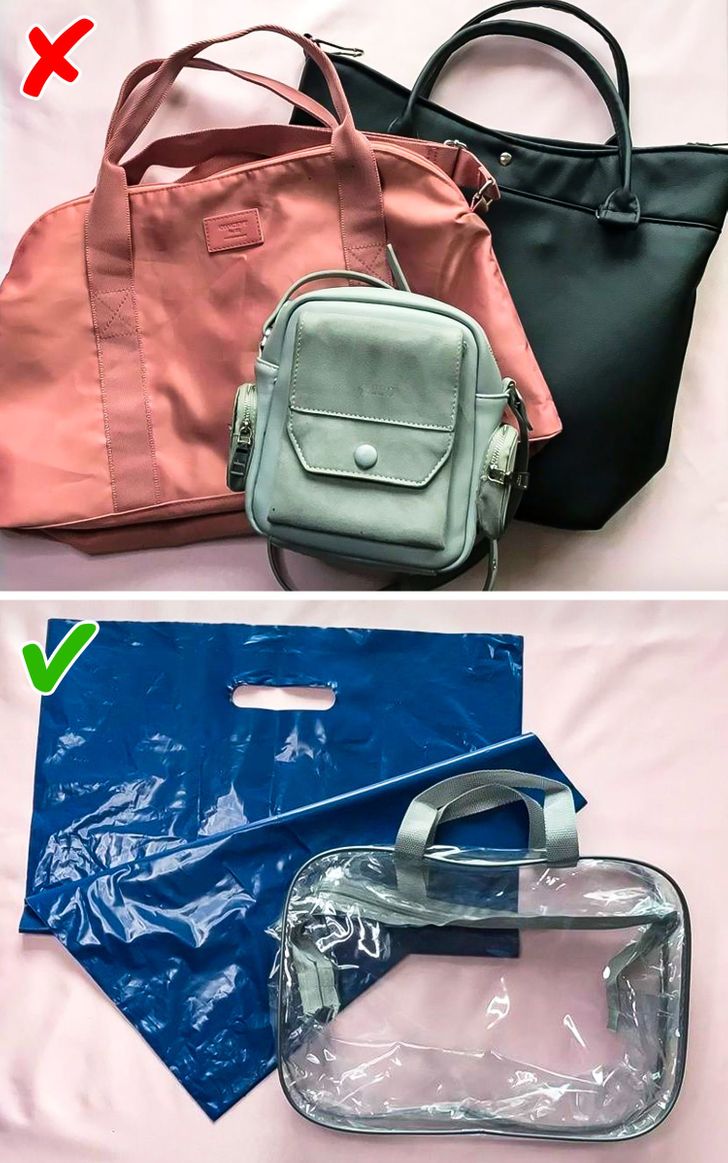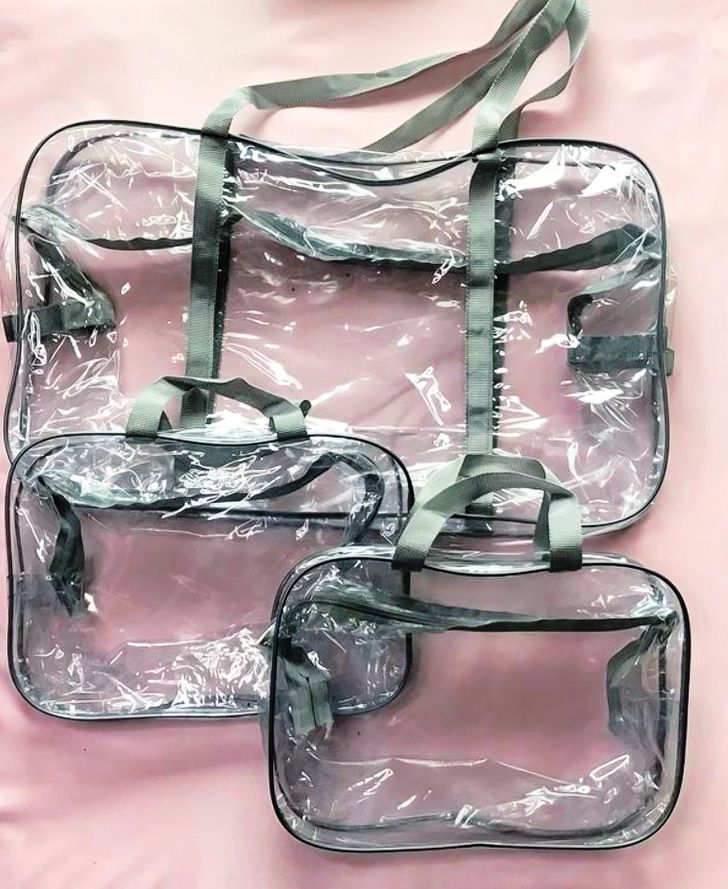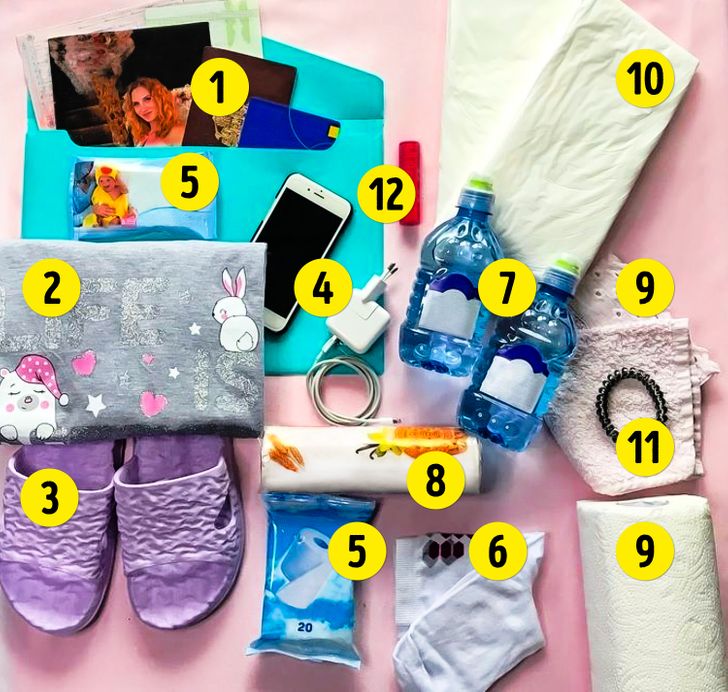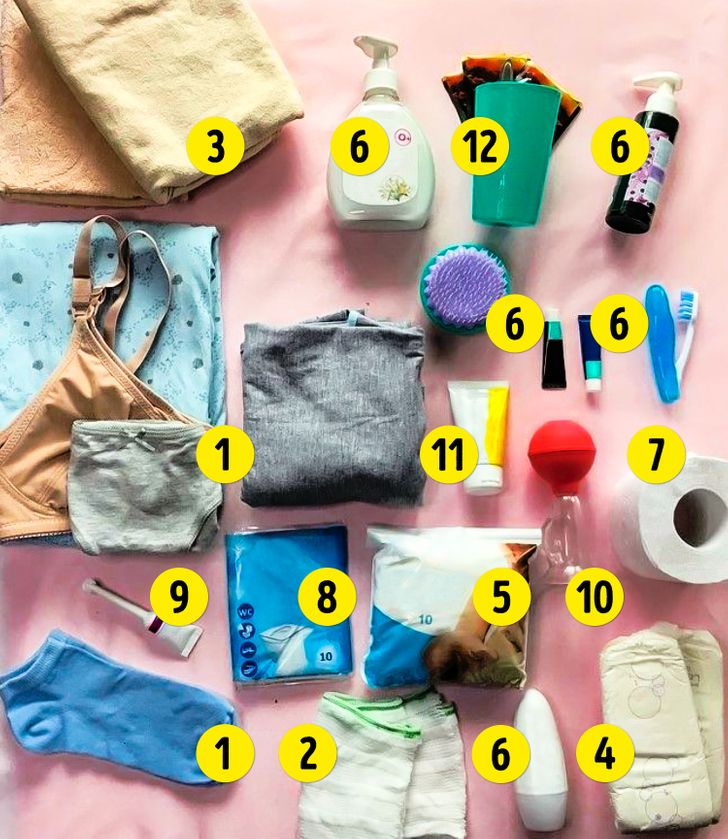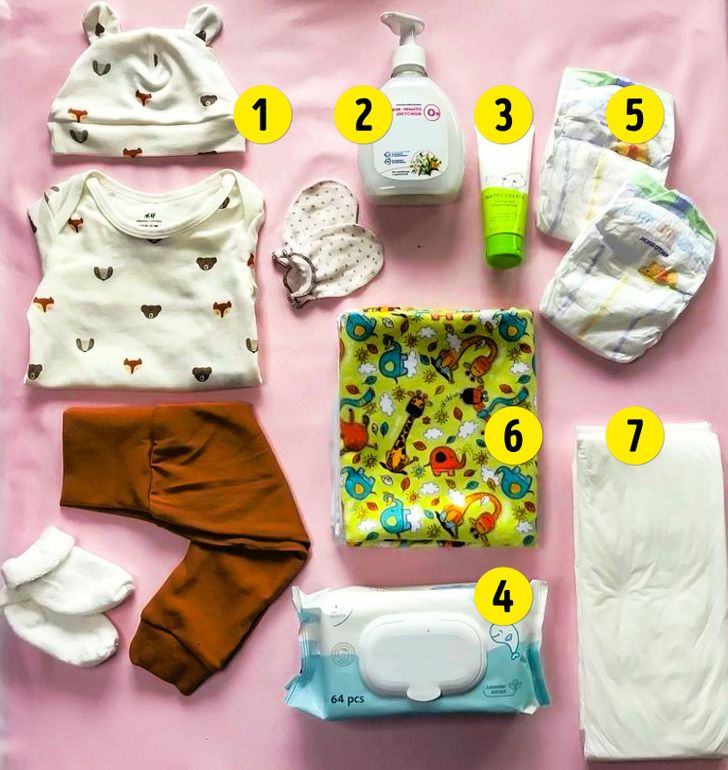How to Pack a Bag for the Hospital When Having a Baby
Packing a bag for the hospital can be a true challenge for a future mother, or it can become one of the best memories ever. Everything depends on how carefully and timely it’s done.
5-Minutes Crafts created detailed instructions on how to pack a bag for the hospital.
When to start packing your hospital bag
There is no single opinion on when to pack a bag to take to the hospital as your due date approaches. Some people wait for the start of their maternity leave to finally begin doing this exciting and sentimental activity. Others prefer to not feel rushed and to prepare things several weeks before childbirth. Gynecologists recommend starting to pack everything you need at 32–36 weeks, because starting from the 39th week, a child in the womb is considered full-term and can be born at any time.
What can and can’t be used to take things to the hospital
Despite the fact that the conditions for checking future mothers into hospitals can vary, usually, any bag is fine. But there are still ways to make it easier for you: bags should have a smooth and washable surface. Textile, leather, or suede will not really work. It would be smarter to opt for a transparent PVC bag or a regular plastic bag.
An important note: Transparent bags can be much more useful and convenient than non-transparent ones. All because when you look at them, you can quickly determine which bag you need right at that moment and this will prevent you from mixing up the prenatal and postnatal bags.
How many bags should you take
There are various things you’ll need before and after childbirth. In order not to have to search for them in one bag, it might be more convenient to split the necessary items into 3 groups. Pack the things that are necessary for labor in the first bag and things that you’ll need right after the baby is born in the second bag. In the third bag, you can include clothes (for both you and the baby) to wear at check-out.
Bag #1, for childbirth
1. Documents: passport, birth certificate, insurance card for the pregnant woman. If you decide that your partner or other relatives will be present at the childbirth, make sure to take the documents for the person who will be there with you in the maternity ward. This is usually a passport or driver’s license.
An important note: The documents may slightly vary depending on the hospital. That’s why it’s better to learn about the hospital you’ll be giving birth to your child at and find out what documents you will need to take with you.
2. A gown, nightgown, chemise, or oversized T-shirt. When choosing clothes for childbirth, don’t try to look perfect — first and foremost, it is important that you feel comfortable in these clothes. In addition, there is a high probability that you will stain them.
3. Flip flops or other washable slippers. Only bring washable footwear that will be easy to shower in.
4. Mobile phone and a charger for it.
5. Wet wipes and toilet paper.
6. Socks. Some women have cold feet when in labor, so make sure you take a pair of socks with you in order to stay warm.
7. Water. You might become thirsty during intense labor. Make sure you take water with you in order to quench your thirst. Don’t bring a 1-gallon bottle with you — instead, take several small bottles that will be convenient to drink from.
8. Snacks. A woman in labor loses a lot of energy and may start feeling hungry. Take some crackers, fruit, or a handful of dried fruit to quickly satisfy your hunger.
9. You may want your own towel or paper towels to dry your face if it gets sweaty.
10. Disposable absorbent pads are a must-have for the delivery room. It is better to take a large pack with you. They can also be used after childbirth.
11. Elastic band for hair. If you have long hair, make sure to put it in a ponytail or a bun during childbirth.
12. Lip balm is not a must-have item, but some women have said that their lips get dry and crack while in labor. A moisturizer can help relieve irritation.
An important note: Carefully check the bags you’re packing in order not to forget any important items. When you arrive at the hospital, your loved ones may not be allowed to see you and give you anything extra.
Bag #2, right after childbirth
For the mother:
1. Clothes: a nightgown and a hospital-friendly gown, a nursing bra, socks.
An important note: You will need different clothing before and after labor. The gown, chemise, or T-shirt you wear during labor will need to be replaced. If you give birth in the fall or winter, take into account that it might be colder in the room (although most hospital rooms are cold in general). Make sure to take warm socks to prevent your feet from getting cold.
2. Disposable postpartum panties, 5–7 pair. These type of panties are made out of soft, breathable material that doesn’t press or rub, which is very important in the postpartum period. Moreover, you’ll have to change your underwear much more often right after childbirth, than you usually would. This can be done without extra hassles if you use disposable panties.
3. Towels. You should take 2 towels with you — a big one and a small one. It will be convenient to take a shower with the first one and wash your hands and face with the second one.
4. Special postpartum cotton maxi-pads, 1–2 packs. If you wish, you can use large, super-absorbent pads. Just keep in mind that their surface should be soft and breathable.
5. Special pads for breasts, 6 pairs approximately. After childbirth, colostrum starts to actively be produced in the woman’s breasts. Sometimes it is produced in big amounts and starts to ooze from breasts. In order to prevent leakage, make sure to take special round pads for your breasts.
6. Hygiene supplies: toothbrush, toothpaste, deodorant, shampoo, baby soap, and a hairbrush.
An important note: It is important for the baby to feel your natural smell during their first days, so make sure to opt for neutral products without strong fragrances for your personal hygiene.
7. Toilet paper.
8. Disposable toilet seat covers.
9. Micro-enema. Can be required for constipation, which sometimes occurs a few days after childbirth.
10. A breast pump will help relieve heaviness in the breasts if they produce too much milk, as well as activate lactation if there is not enough milk in the breasts.
An important note: There are many types of breast pumps on the market today from simple mechanical ones to convenient and electrical ones. In the hospital, you’ll only need the simplest device for pumping milk. You can use a more advanced version at home.
11. Nipple cream with lanolin. The skin on a woman’s breasts is very thin and sensitive. If the baby suckles too intensely, the breasts may become chafed and cracked. In order to heal the wound quickly, use a cream with lanolin. It actively moisturizes and heals the skin, and is safe for babies.
An important note: Don’t use creams not meant for nipples if you are breastfeeding. Keep in mind that everything you apply to your breasts, gets into your baby’s mouth.
12. Utensils and snacks: a mug, a spoon, tea bags, light snacks.
For the baby:
1. Clothes: shirts, pants, socks, anti-scratch mittens, hat. Take 1-3 sets of baby clothes to the hospital. If you need more clothes, you can always ask your loved ones to bring more to you.
2. Odorless liquid soap for washing the baby.
3. Baby cream or diaper cream will save the baby from diaper rash.
4. Wet baby wipes.
5. Diapers. Opt for the ones that indicate a weight of 5-11 pounds or the ones that say “Newborn.”
6. Reusable changing pads, 1–3 pieces. Most hospitals let their patients use their pads, but you can always take yours.
7. Disposable pads are convenient when changing the baby’s clothes because at this moment many babies like to pee or poo. Also, disposable pads will prevent the baby from leaking if he/she is very active and diapers are constantly moving to the side because of their constant motion. Place a disposable pad under your baby before they sleep at night and if the diaper leaks, the rest of the linens on the bed will stay dry.
Bag #3, for check-out
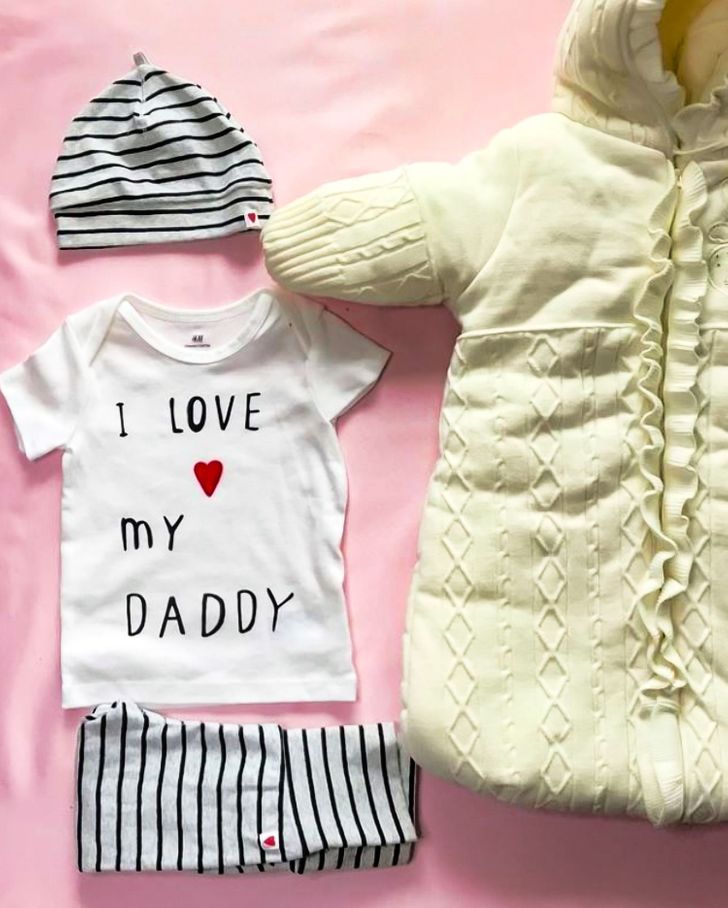
It’s better to pack this bag yourself, so you can be sure you haven’t forgotten anything. You’ll need:
- Clothes and a cosmetic bag for you.
- Clothes for the baby: a shirt, pants, a hat, outerwear according to the weather.
